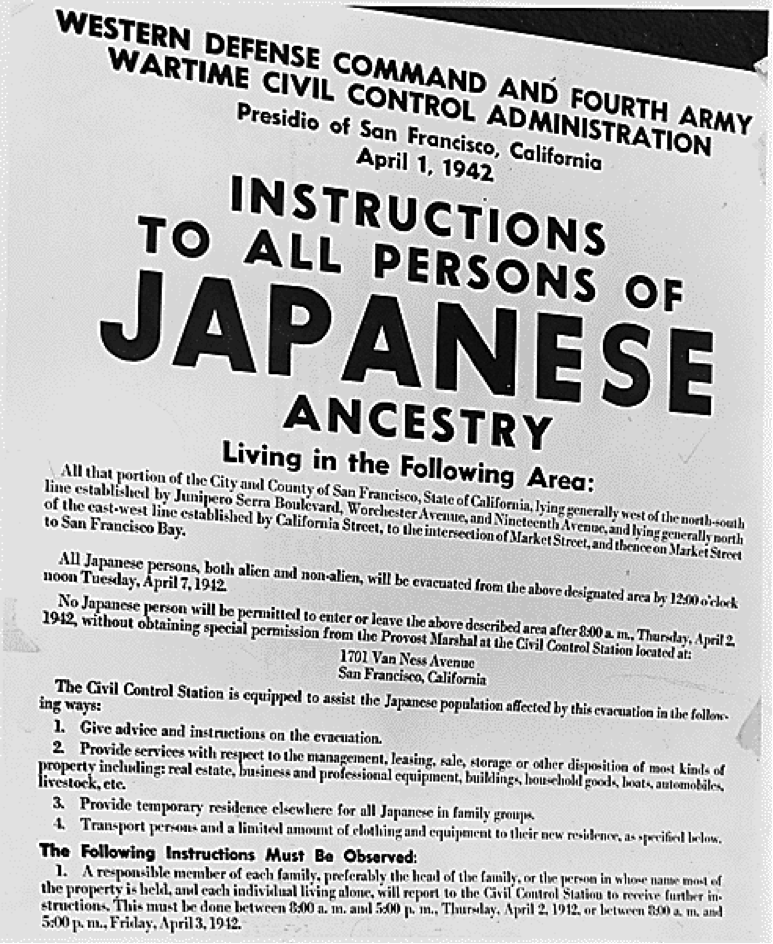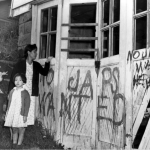by Daad Sharfi
Vi Takahashi was a young Seattle teenager in 1942 when President Franklin D. Roosevelt signed Executive Order 9066, ordering all Japanese-Americans to vacate the West Coast. It was two months after the attack on Pearl Harbor. The order displaced 120,000 people.
While Takahashi herself was never interned, her husband spent two years in the Manzanar concentration camp in California, and her father—arrested the night of the Pearl Harbor attacks—was imprisoned in Ft. Missoula, Montana. She vividly recalled her own anxiety and fear through an illustrated talk entitled “Loyal Citizens, Prisoners of War.”
The talk was part of a week-long series of Remembrance Day events highlighting narratives of internment. Using a combination of oral history, graphic images, and hand-drawn sketches of the camp structure, Takahashi brought to life a tragic period in American history in which an entire group of people was classified as the “enemy” and treated as such.
Takahashi emphasized the inhumane conditions of Japanese internment camps from the outset of her presentation. The Manzanar camp’s 500-acre housing section was surrounded by barbed wires, guard towers with searchlights, and a patrol of military police. Eight individuals would share a 20-by-25 foot room furnished only with a light bulb and some cots. These were concentration camps.
FDR’s Executive Order 9066 described Japanese Americans as threats to national security, igniting xenophobia against people of Asian descent and reinforcing an imagination of the American citizen built upon whiteness. Reflecting on the alienation she felt in her family’s neighborhood of 25 years, Takahashi poignantly noted that while it takes years to build trust, “It only takes suspicion and not proof to destroy it.”
The forced relocation of men, women, and children of Japanese ancestry—70% of whom were American citizens—to ten remote internment camps across the country disrupted traditional family life and inflicted severe psychological trauma. It also incurred approximately $1.5 billion and $2.7 billion in property and income loss, respectively.
As one of only a few remaining internment survivors, Takahashi was wary of present and future incarnations of similar state-sanctioned prejudice. Using the examples of a Burqa-clad woman and bearded Brown man, she compelled her audience to contemplate the kinds of associations we attach to people who look “different.” Using ethnic background to question people’s rights and loyalties is neither a new phenomenon, nor one that will escape us anytime soon.



